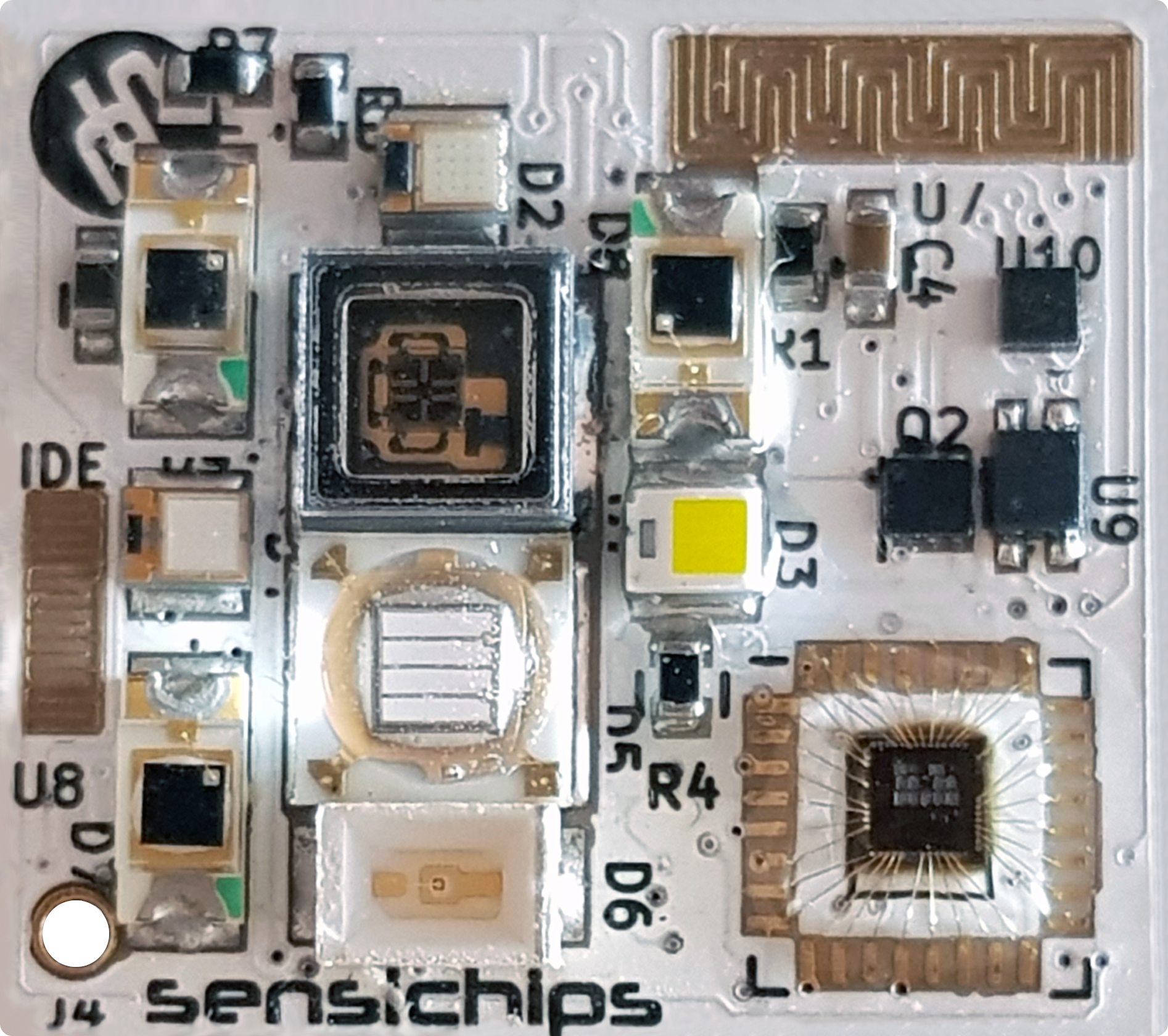Others

Spectrophotometer
Lock-In Amplifiers are key devices in numerous instruments used in the optical sciences and in optical equipment in industry. In many experimental configurations, they represent the means to reliably detect and record very small signals that are superimposed by noise. The SENSIPLUS device integrates a frequency programmable Lock-In Amplifier and it can directly drive LEDs up to 20mA and perform synchronous demodulation of the 1st, 2nd and 3rd harmonics.
SENSIPLUS can be applied in several optical spectroscopy applications, including absorption spectroscopy, fluorescence spectroscopy, and phosphorescence spectroscopy; optical interferometry. Other applications that can be addressed are magneto-optical, electro-mechanical, and electro-optical measurements; infrared thermography; laser wavelength stabilization; and advanced microscopy.
The device in the illustration in development at Sensichips is a miniature spectrophotometer for absorption and fluorescent spectroscopy using commercial LEDs. LEDs are used both as emitters and wavelength selective detectors for cost reduction and miniaturization.

Bio-impedance spectroscopy
Structural Integrity, Corrosion Monitoring
Electrochemical methods are among the most effective and commonly used to monitor the progressing of corrosion in infrastructures.
The corrosion mechanism taking place in an aqueous or vapor phase is electrochemical in nature. The electrochemical signal is one of the primary sources of information that relates to behavior in potential, current, and electrical charge of a corroding specimen. It arises from processes that cause corrosion and other electrochemical reactions. When applied online for monitoring in-situ uniform, localized, galvanic, or more forms of corrosion, electrochemical techniques are very convenient means to measure corrosion rate of materials.
The SENSIPLUS microchip once configured with three electrode potentiostatic measurement can be used for online monitoring of the linear polarization resistance (LPR), an indicator of the corrosion trend, or it can forecast corrosion by electrochemical impedance spectroscopy (EIS), while the rate of corrosion is best assessed using harmonic distortion analysis (HDA), which is also supported by SENSIPLUS with its capability to demodulate the 2nd and 3rd harmonic of the applied sinewave.
Concurrently SENSIPLUS will sense relevant environmental parameters such Temperature, Moisture, pH or Relative Humidity to improve the corrosion indicators.

